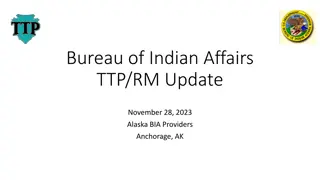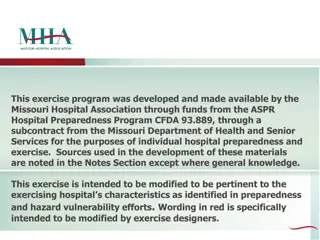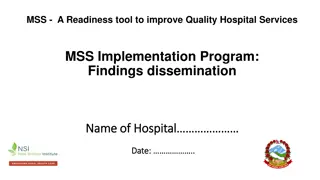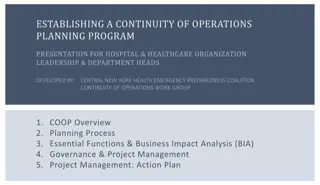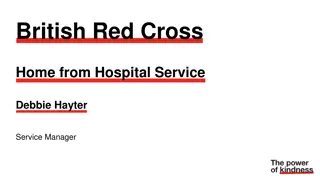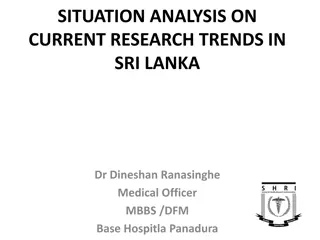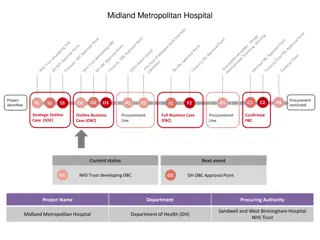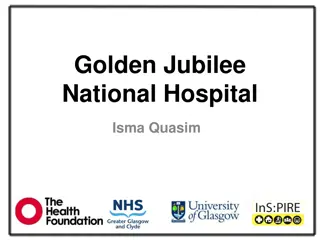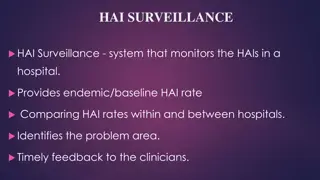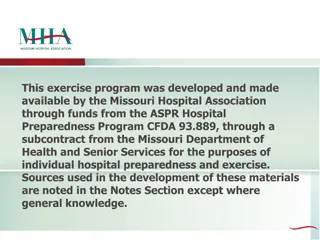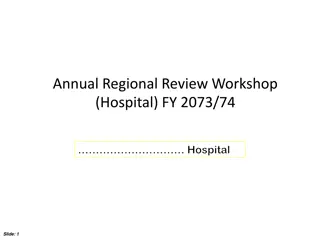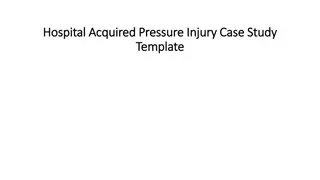Conducting a Business Impact Analysis (BIA) Workshop for Hospital & Healthcare Organizations
This workshop, led by industry experts, focuses on the essential steps of conducting a Business Impact Analysis (BIA) for hospitals and healthcare organizations. Key topics covered include project management, identifying essential functions, organizational functions, and engaging hospital leadership. By following the outlined process, organizations can better prepare for emergencies and ensure continuity of operations.
Download Presentation

Please find below an Image/Link to download the presentation.
The content on the website is provided AS IS for your information and personal use only. It may not be sold, licensed, or shared on other websites without obtaining consent from the author. Download presentation by click this link. If you encounter any issues during the download, it is possible that the publisher has removed the file from their server.
E N D
Presentation Transcript
CONDUCTING A BUSINESS IMPACT ANALYSIS (BIA) HOSPITAL & HEALTHCARE ORGANIZATION WORKSHOP Central NY Health Emergency Preparedness Coalition March 15, 2018 Presenters: Brinton Muller, Little Falls Hospital Andrew Jewett, Iroquois Healthcare Association CNY Health Emergency Preparedness Coalition Continuity of Operations Workgroup
CONDUCTING A BIA GETTING THERE A Quick Review COOP PLANNING Obtain Executive Support Establish Project Management Identify Essential Functions Conduct Threat and Risk Analysis Conduct BIA Determine COOP Plan Priorities Develop Concept of Operations Develop Additional Elements: Activation Orders of Succession Delegation of Authority Continuity of Facilities Continuity Communications Vital Records Management Human Resources Devolution of Control Restoration/Reconstitution Maintaining Continuity Readiness
CONDUCTING A BIA GETTING THERE A Quick Review ESSENTIAL FUNCTIONS Cannot be deferred during an emergency; Must be performed continuously or resumed quickly; Serve as key planning factors necessary to determine appropriate care delivery, staffing, communications, essential records, facilities, training and other requirements; Determining essential vs. important helps to free up resources to focus on essential functions which cannot be deferred.
CONDUCTING A BIA GETTING THERE ORGANIZATIONAL FUNCTIONS A Quick Review What are the important functions that support the mission? Sample Essential Functions: Hospital: Emergency Services, Surgical, Patient Care Lab, Health Information, IT/IS, Central Supply, HR, Environmental Services, Radiology, Pharmacy Public Health: Communication
CONDUCTING A BIA PROJECT MANAGEMENT Engage hospital leadership; Meet with Steering Committee to determine what they want to see as a result of the BIA: Operational improvements, interruptions to services, adverse impacts to patient safety, reputation, loss of market share, regulatory fines and corrective actions, security breaches and IT downtime, loss of business critical information, patient health information; Identify your BIA Team; Collect a list of all departments, cost centers, and department leaders and contact information to track your BIA progress.
CONDUCTING A BIA DESIGN Data collection and reconciliation are common problems; Document what information you want to keep and track in a master spreadsheet; Recommend the following fields to keep: Division, Division Leader, Department, Department Leader Contact information (email, and phone) for Leaders.
CONDUCTING A BIA DESIGN Create a dashboard for tracking progress. Example Dashboard Data Targeted Recipients Interviews Scheduled % Scheduled Interviews Completed % Completed BIA Tool Entry % Entered BIA Tool Reconciled % Completed
CONDUCTING A BIA SURVEY Survey is designed to determine each department s essential functions, and top applications/systems and equipment that support that function; To ensure consistency in how questions are asked and answered consider: Employee head count to include full time employees and hours of operation so that costs and revenue are accurate; Is daily revenue based on 5 day work week or 365 days of operation; Drop down menus for essential functions ; Separate BIA for non-clinical departments without patient or family impact; Develop a communication schedule.
CONDUCTING A BIA INTERVIEWS & ASSESSMENT Finalize schedule for interviews; invite dept. leaders and their VP; Conduct interviews in a facilitated approach with a recorder; Consider asking the 3 top essential functions; and then go back to and ask about the top 3 applications and impact to functions; Track everyone targeted on master list; add others as needed; Validate responses through a team review of interview data and notes. This is an important step to ensure consistent information throughout the process.
CONDUCTING A BIA ANALYSIS Prioritize Applications and Essential Functions; Establish Recovery Time Objectives (RTO) & Recovery Point Objectives (RPO) for each. RTO - Maximum duration of service or application outage before significant operational, patient care or family experience impacts occur. RPO - Maximum amount of tolerable data loss.
CONDUCTING A BIA ANALYSIS RTO and RPO combine to determine Tiers prioritization and sequencing of recovery. Tier Description RTO RPO Example 0 Foundational Infrastructure Email, Network, Phones 1 Critical 0-4 hr <30 min CIS, EPIC 2 Urgent 4-24 hr <60 min Lawson, ETM 3 Important 24-96 hr <12 hr CIS Training Application 4 Required 5-7 days 12-36 hr Archived Images
CONDUCTING A BIA ANALYSIS To complete Tier Assignments: Export data from BIA Tool to a master excel spreadsheet; Conduct quality assurance of data and gap analysis (integrity of data, reconciliation of independent sources, missing data); Create a view of all data submitted showing impact scores; Assign values (weights) to the scores.
CONDUCTING A BIA ANALYSIS Description N/A or blank > 72 hours < 72 hours < 24 hours < 8 hours < 4 hours 0 hours 9 - null (or blank) 1 - None at all 2 - minimal risk 3 - moderate risk 4 - severe risk 5 - immediately life threatening 9 - null (or blank) 1 - none at all 2 - minimal 3 - moderate 4 - severe Weight 0 1 3 5 7 9 11 0 1 3 5 7 14 0 1 3 5 7 Operations Impact Patient Safety Impact Family Impact
CONDUCTING A BIA ANALYSIS & REPORT Weights are added together and multiplied by the enterprise context to create a Total Impact Score; The Total Impact Score is used to create tier assignments; Financial Analysis; Final Report includes a narrative detailing subjective and quantitative findings; Present findings to Steering Committee; Include and use as a guide for the overall COOP Plan.


